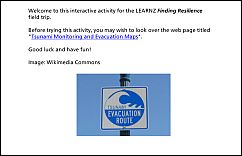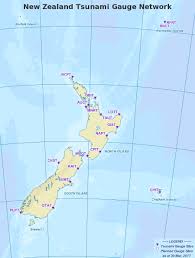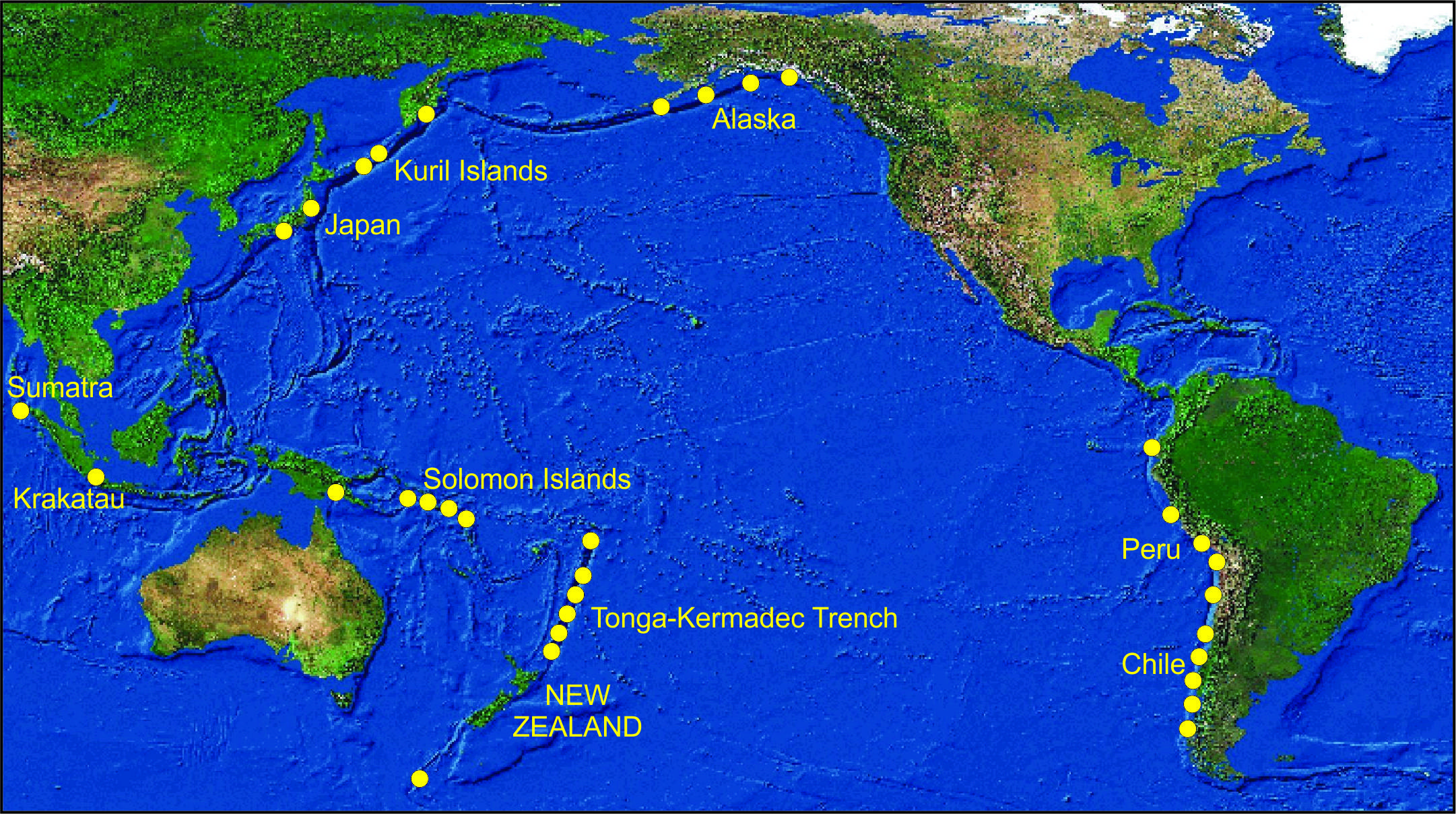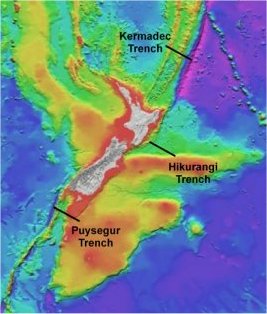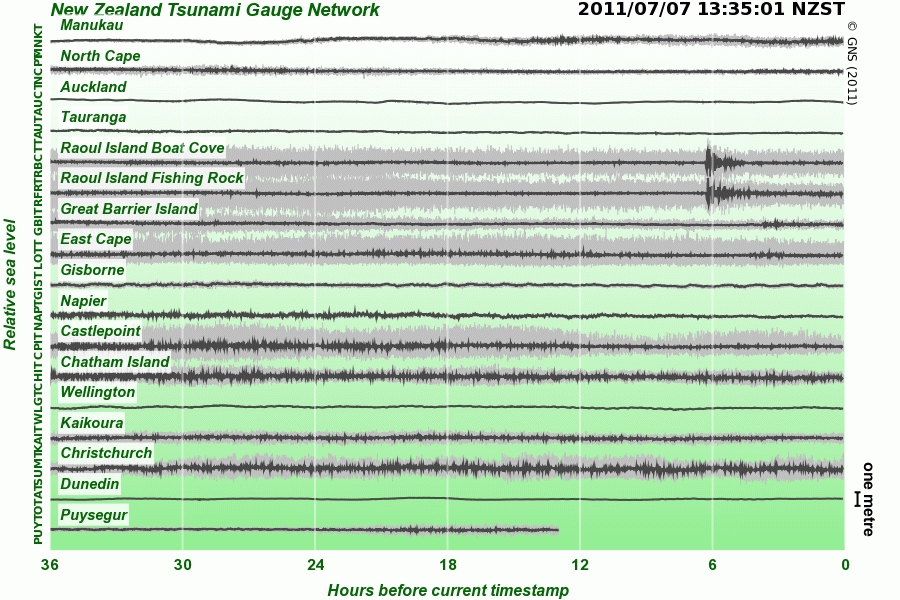What is a tsunami?
A tsunami is a series of sea waves or surges caused by a sudden event beneath, or near the ocean which causes the water column to move and a tsunami ‘wave’ to form.
What causes a tsunami?
The most common cause is a seafloor earthquake. Other triggers are:
- undersea landslides
- undersea volcanic eruptions
- and meteorite impact.
Sudden changes to the seafloor cause the ocean to flow away from the disturbance, creating waves.
Warning systems
New Zealand has a warning system for tsunamis caused by distant earthquakes (such as in South America), but does not have a warning system for tsunamis caused by local events. Why? Because tsunami generated by local earthquakes can arrive at the nearest coast before scientists can calculate the location of the earthquake and issue a warning. This is why it is important to get to higher ground if there is a strong earthquake where it is difficult to stand, or if the shaking lasts longer than a minute. "If an earthquake is strong or long get gone".
For tsunamis coming to New Zealand from distant places, the Ministry of Civil Defence and Emergency Management receives warning from the Pacific Tsunami Warning Centre in Hawaii. Ministry of Civil Defence and Emergency Management is responsible for evaluating the danger to New Zealand, and will ensure national or regional warnings are issued, if necessary. Tsunamis from South America, Alaska, and Japan, take more than 12 hours to reach New Zealand, giving authorities time to make decisions.
Long period seismic sensors are in place around New Zealand to detect potential tsunami-generating earthquakes that occur off the coastline.
Tsunami gauges are also installed around the New Zealand coast. These will not provide a warning system for tsunami generated close to shore, but will confirm the occurrence of a tsunami and record the tsunami characteristics.
Tsunami detection and modelling
To better understand tsunami and the risk for New Zealand scientists work on;
- identifying tsunami sources and modelling waves
- studying offshore faults and earthquakes that may produce local tsunami
- identifying tsunamis that have occurred in the past and measuring their impacts
- working with scientists from other countries to share information and research
- monitoring earthquakes that could produce tsunami
- LINZ maintain a network of tide gauges to detect arrival and height of tsunami waves
- modelling local tsunami produced by earthquakes, undersea landslides and volcanoes
- educating the public so people know what to do if there is a tsunami
Monitoring sites
LINZ has established a network of sea level monitoring sites at 18 locations around New Zealand and Antarctica. These sites measure tsunami, tides and sea level.
With the exception of the Antarctic site, the primary purpose of the network is to upgrade and improve New Zealand's response to tsunami hazards. However, the data generated can also be used for other purposes.
Today there are a number of different types of technology to choose from to make sea level measurements. Some systems are mounted above the water and determine the distance down to the water surface by measuring the time taken for a pulse of sound or radar to travel down to the water and be reflected back to the source. Other systems are placed under the water and measure the water pressure which is converted to the height of the water column above the sensor.
In the open ocean, tsunami waves travel at 600kph to 700kph. In the deep ocean, waves from a large tsunami may be as little as 60cm high. They pass ships unnoticed. As they encounter shallow water, they slow down to about 30kph and increase in height and can travel several kilometres inland in low lying areas.
Tsunami evacuation maps
Councils have made maps of areas at risk from tsunami. You can visit your local council website to find out if the area where you live should be evacuated if there is a tsunami. Usually 3 zones are shown:
- The Red Zone: is the sea, beach and some very low lying areas. This area is the one people are asked to stay out of most often as a result of
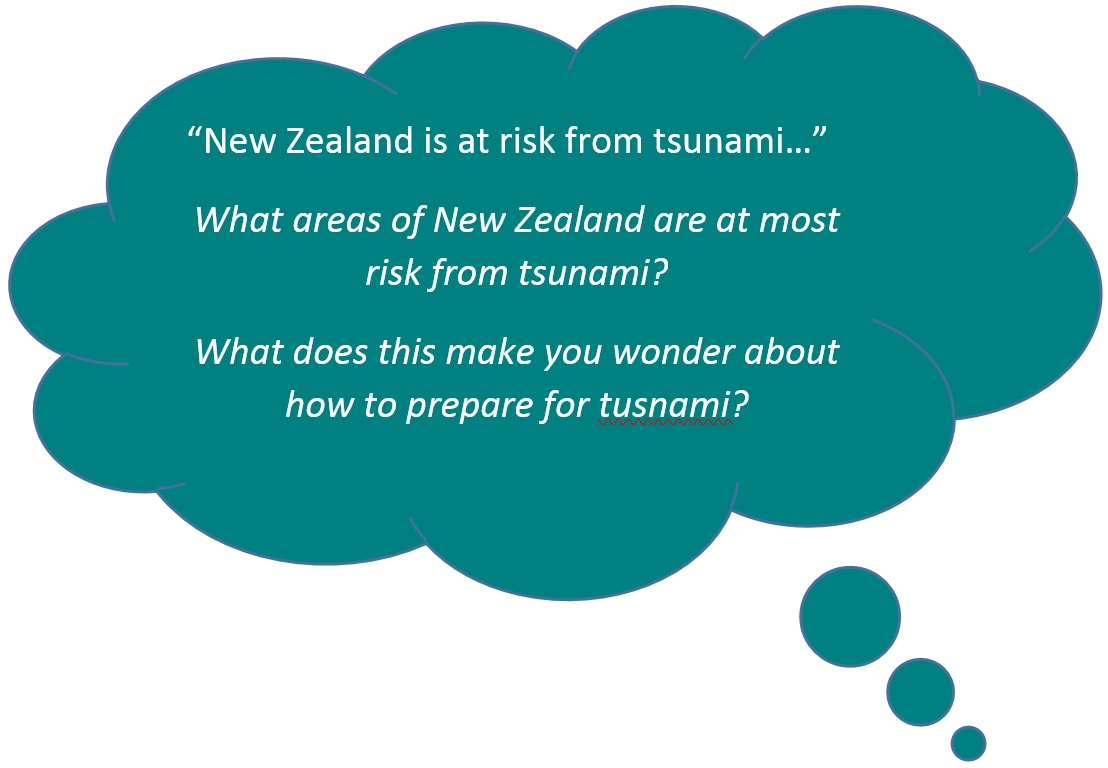 smaller tsunamis.
smaller tsunamis. - The Orange Zone is the area that may be evacuated for large earthquakes in the Pacific, such as near South America, causing a tsunami wave of up to 5 metres at the coastline.
- The Yellow Zone is the self-evacuation zone which means if you feel a long or strong earthquake, then get yourself out of all zones. This zone will only be affected by large tsunami.
People should evacuate these zones when instructed to, or immediately after any long or strong earthquake. Remember the earthquake may be the only warning of a tsunami, so do not wait for further instructions, notifications or advice, evacuate immediately after the shaking has stopped.

